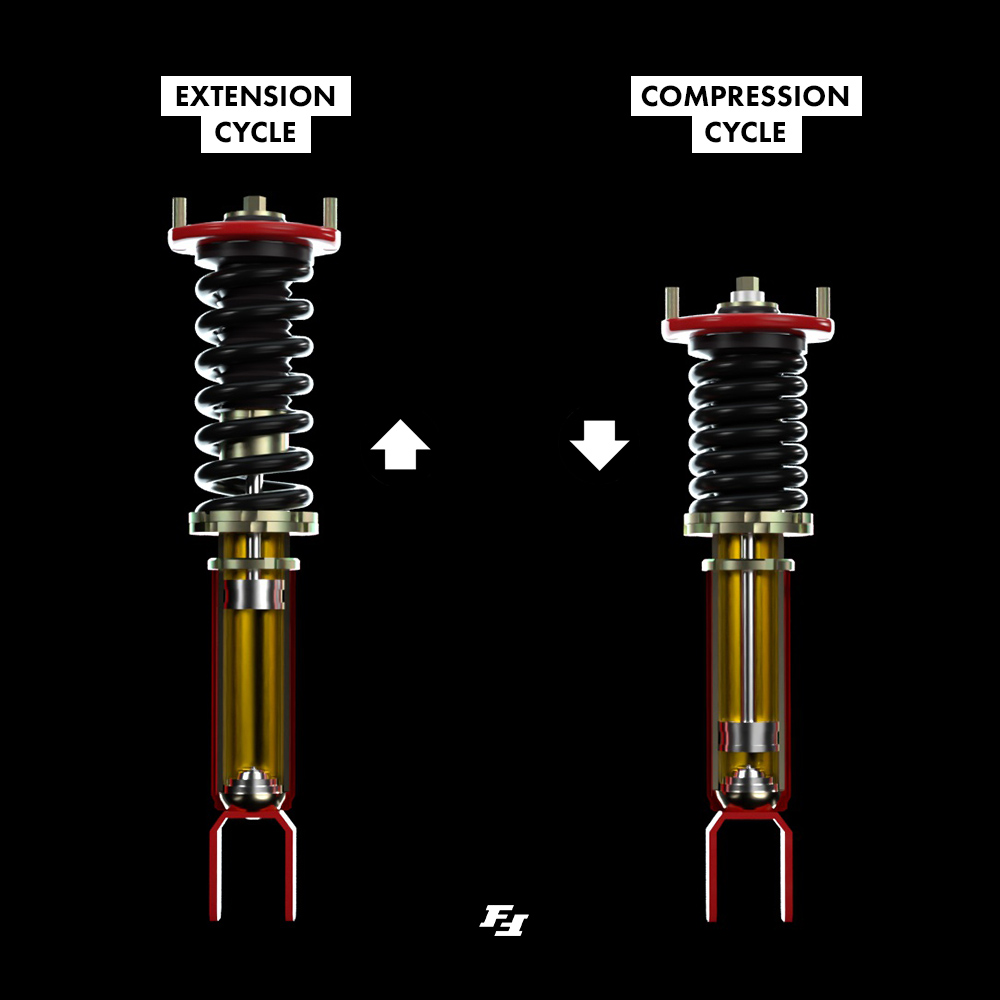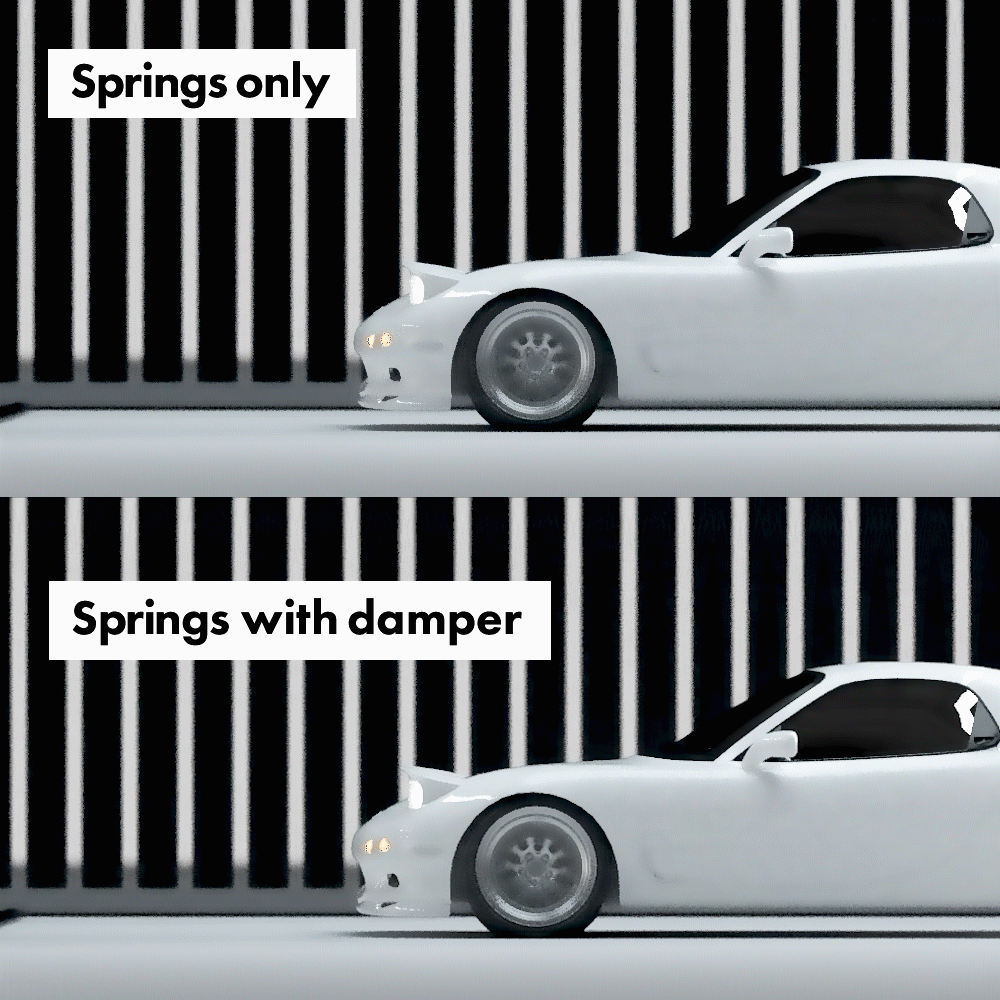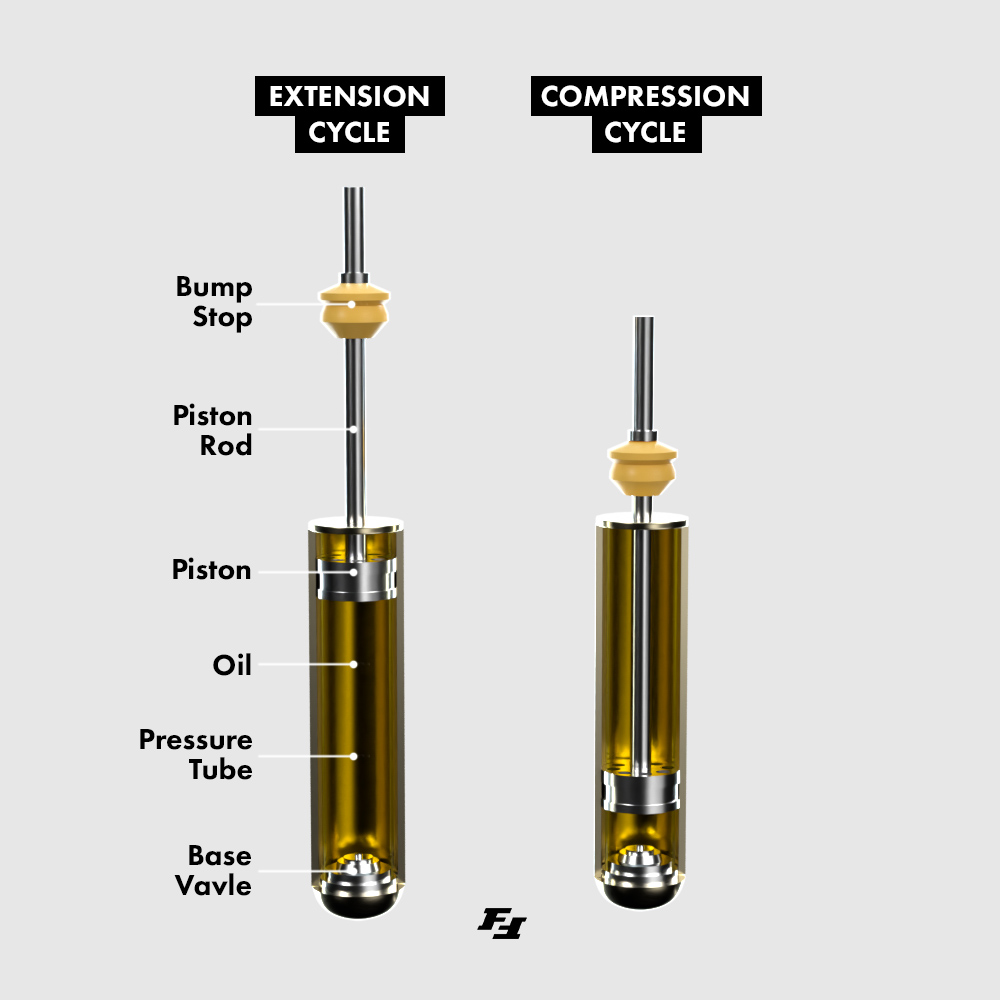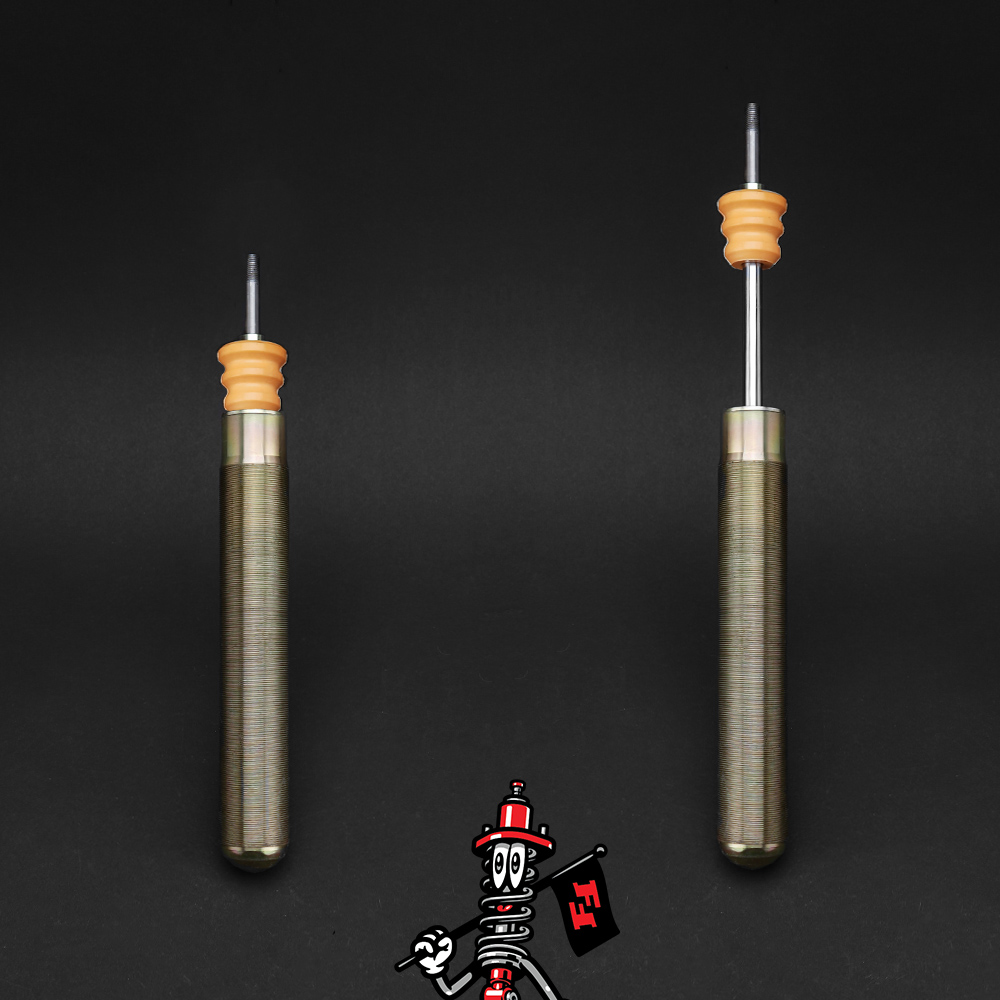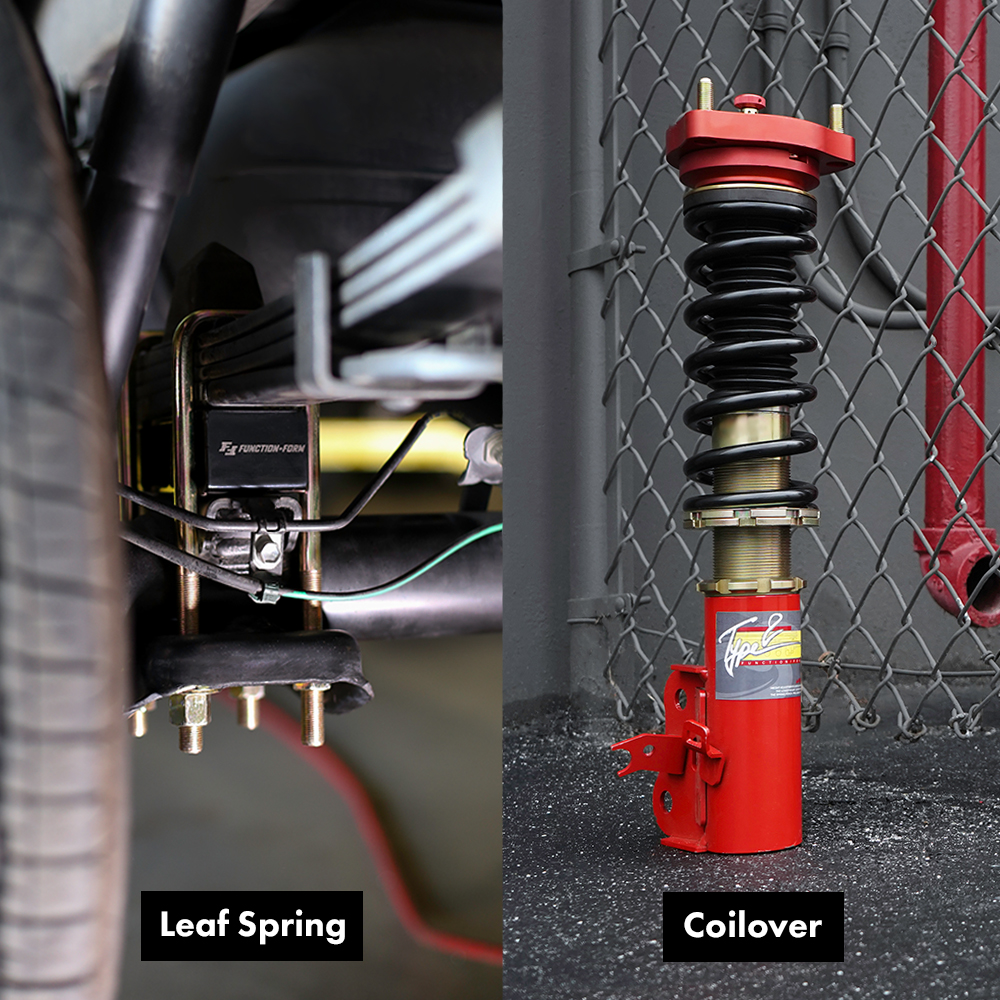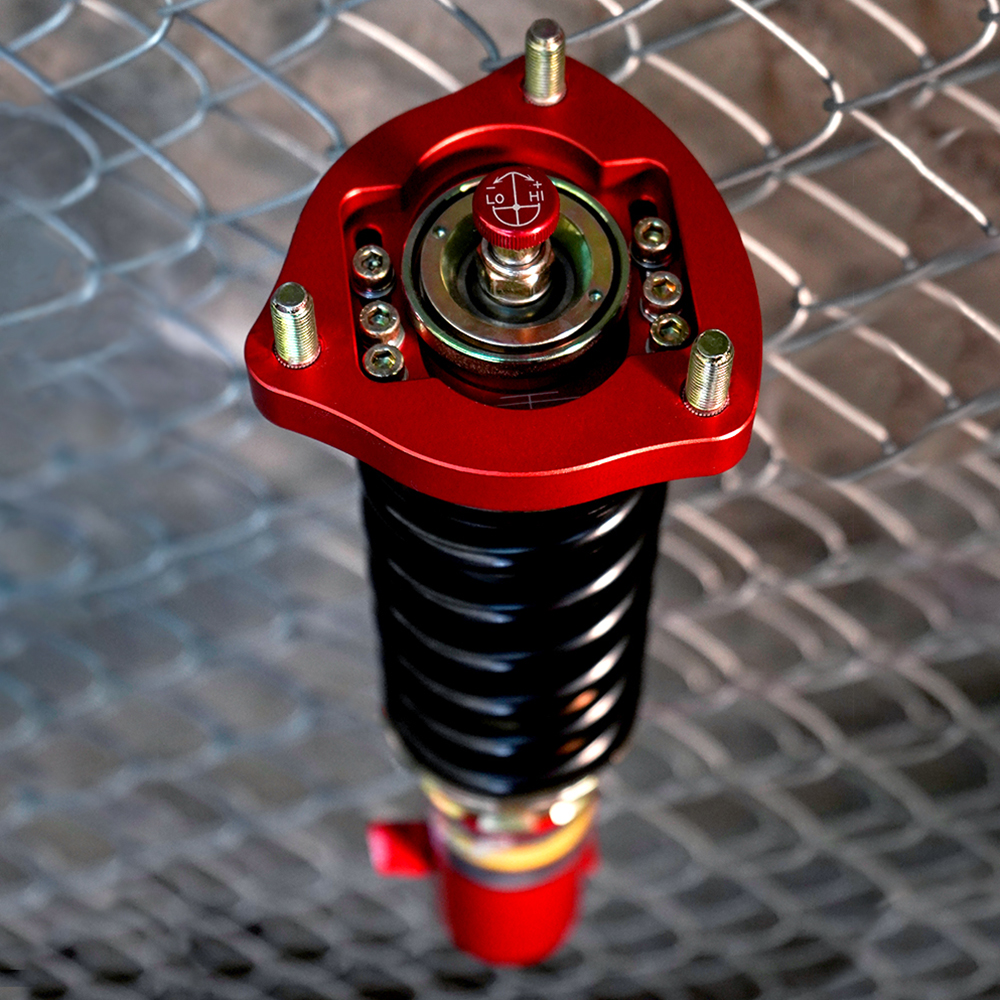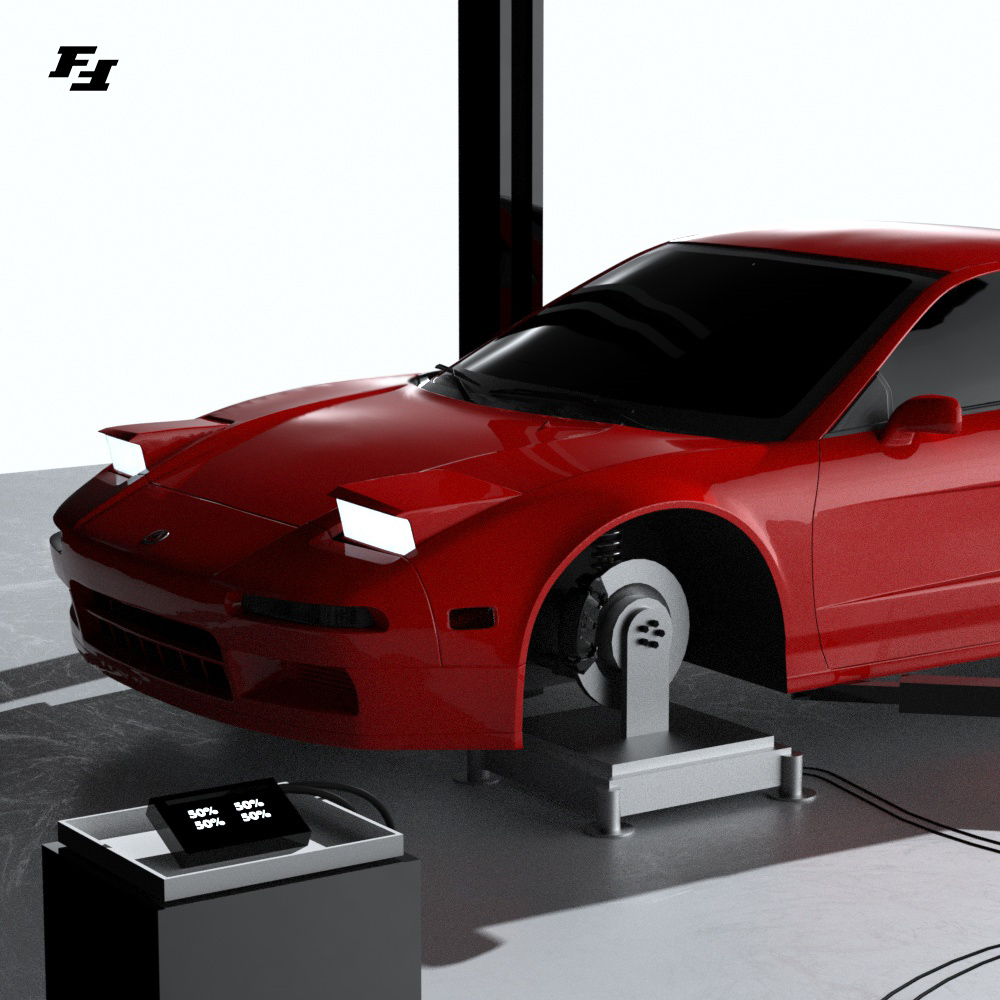– HOW COILOVER SUSPENSION WORKS –
Enthusiasts and professionals alike often view suspension as the most complicated set of components of any car. But once you’ve unlocked the mysteries of optimal suspension parts selection and setup, your car will find vastly improved ride comfort and handling ability. Before getting started, it’s best to understand what suspension is for and the components that make it up. Here, we’ll provide an overview of coilover suspension before digging into specifics later, such as damper adjustments and corner balancing.
Why is suspension so complicated compared to other upgrades like increasing horsepower and torque? The answer comes down to variables. For engines, the key to making power and building a better motor is just a series of math problems. You can calculate airflow, mass, forces, material strength, and more. The process largely comes down to making more powerful combustions, reducing friction and inertia, and increasing strength to withstand it. But with suspension, you never know exactly what will be thrown into the equation.
In a racing environment, every race track has its own quirks and defining characteristics with rumble strips, curbs (or kerbs), elevation changes, uneven surfaces, and more. Beyond that, every car and driver are different, both affecting the rate and amount of suspension travel in different situations. Driving on public roads introduces even more variables to the mix. Some roads are glass smooth while others are full of potholes and road repairs. Plus, there are many different types of curves, bumps, and dips that can occur in just a few miles of driving.
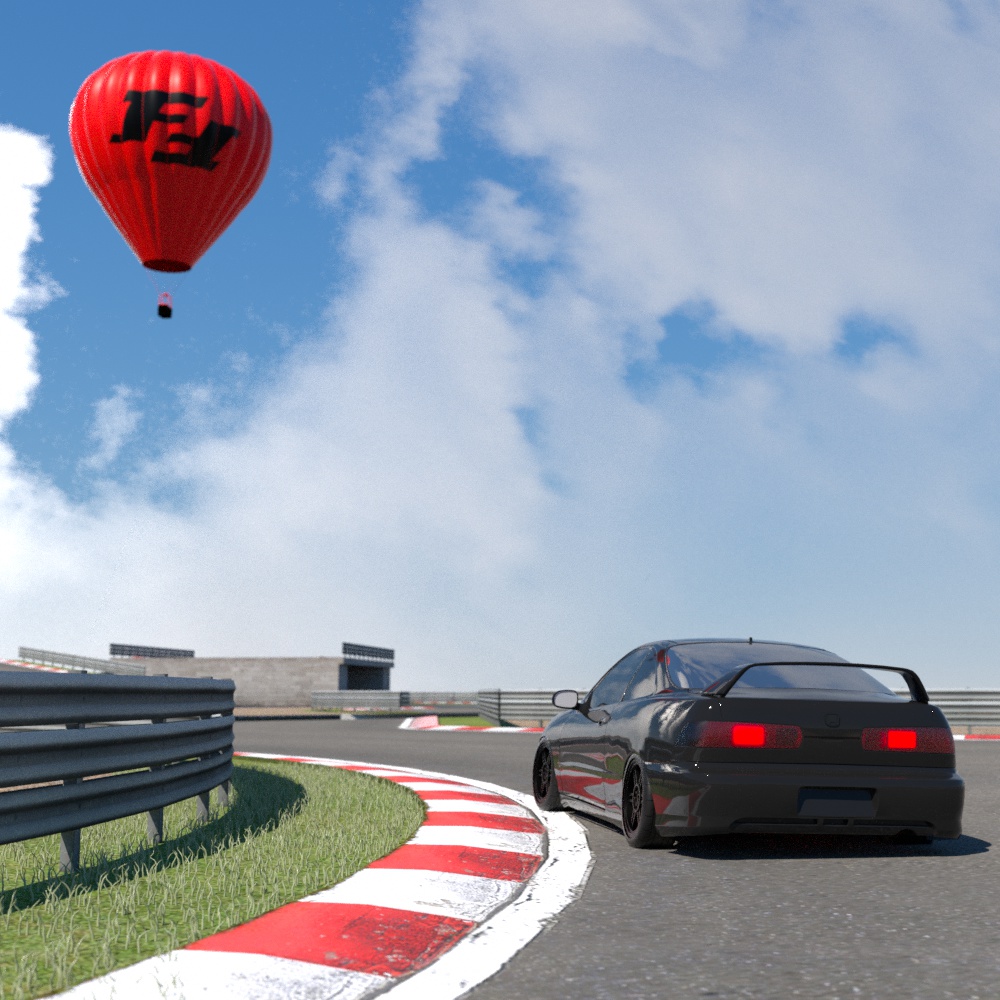
Although suspension components must be designed around these many different situations and applications, they must serve two primary functions for any street car: provide comfort for the vehicle occupants, and to optimize vehicle handling.
What Does Suspension Do?
The idea of suspension revolves specifically around the up and down motions of its components as they manage the vehicle’s chassis and tire contact with the road. The key components doing the work here are the springs and the dampers (shock absorbers, or shocks). When these components experience an upward force against them, this is referred to as “compression” or “bump.” When they experience the opposite and the dampers and springs expand, this is “rebound.”
If a vehicle’s suspension used dampers without springs, or vise versa, it would be a terrible experience for the driver. The combination of the two are essential to effectively manage the compression and rebound motions.
Springs on their own are prone to rapid and prolonged oscillations when a force acts upon them. In the real world, this translates to an annoyingly bouncy ride that would make the car both extremely uncomfortable and difficult to control in a turn. Dampers step in to control the spring oscillations, allowing compression and rebound oscillations to take place, but at a much more controlled rate. This is accomplished through finely tuned valving that controls the flow of oil through different chambers within the damper. This enables the dampers to respond accordingly to road surface changes and different driving situations, allowing for minimal damping for minor or slower compressions, but then more aggressive damping for higher rate compressions.
Since the performance characteristics of the spring and damper both rely heavily on each other, manufacturers and tuners alike must ensure that the selected spring and damper pairing works well together before sending the car on the road. Differently rated springs might work best with different damper settings, or different dampers altogether. So when you choose to change out your springs or dampers, take into consideration that you might be best off to change both together. For example, stiffer springs in place of the factory units may result in over-working the stock dampers, resulting in unmatched suspension effects and quicker wear on the dampers.
Bump stops are the rubber cylinder or cone-shaped pieces that commonly reside in line with the piston rod of the damper. This component improves vehicle performance and ride quality, while preventing potential damage to parts. They set a limit to the damper compression, preventing any metal suspension parts from colliding. If the bump stop height is correct for the vehicle’s suspension travel, the handling will be predictable and constant, without sudden or unexpected changes.
Coilover Suspension
The term “coilover” simply refers to the common packaging of the spring and damper combination, where the coil springs wrap around the dampers. Coilover differ from leaf spring suspension in that coilovers offer a more compact configuration, and easier setup and tuning. While coilovers are more complicated and less heavy duty, they are often ideal for any performance-oriented setup.
Adjustable Coilover
If you’ve done some shopping around or hung out with drivers at a track day, you’ve likely heard about adjustable coilover. You’ve likely heard terms like 1-way or 2-way adjustable shocks. This number can go even higher, but the likes of 3-way or 4-way dampers are more common for racers who are confident in their setup engineering and/or are running on a pro racing budget. These numbers refer to the parameters of adjustment that are available on the damper.
Dampers from different manufacturers vary in the range of adjustment per parameter, and how much each “click” of adjustment affects damping. The common adjustment parameters are:
1-way: Single adjuster that affects both compression and rebound
2-way: Two adjusters to individually change compression and rebound
When you dig into 3-way and 4-way adjustments, adjustments affect low-speed and high-speed compression and rebound characteristics. These differences come out in how the dampers react to rumble strips (rapid oscillations) versus accelerating and cornering (gradual oscillations). But for regular users, including racers, two adjusters is plenty and a single adjustment is recommended for most.
Corner Balancing
One of the greatest benefits of coilovers is the ability to customize your vehicle’s looks and performance. Adjustments to the ride height at each corner don’t just change the car’s aesthetics, it also changes the weight distribution. This act of corner balancing can help you achieve a perfect weight balance across all four tires, enabling the car to handle to your liking. Achieving an ideal crossweight will make the handling consistent and predictable, while adjustments to the front and rear weights can help induce more understeer or oversteer. A proper corner balance is one of those tuning methods that can “wake up” your car and make it handle like a track-ready supercar.
Advanced Coilover Suspension Tuning
A basic understanding of suspension components and how they work puts you a step above the majority of car owners on the street. This will help you better select parts fit for your needs, and how to set up your car for the right balance of comfort and performance that you’re looking for. The next step is to learn more about how exactly the different components and adjustments may affect your vehicle, and what common mistakes to avoid.
